Freezer Buying Guide
Freezer Buying Guide: Your Comprehensive Handbook to Upgrading Your Freezer
Looking to invest in a new freezer? Our comprehensive freezer buying guide is here to assist you in making an informed decision. From deciding between freestanding and integrated models to exploring various types of freezers and beyond, we've got you covered.
Selecting Your Fit: Freestanding or Fully Integrated?
Your first step is determining whether a freestanding or integrated freezer suits your needs. This choice often hinges on where you intend to place the appliance.

Freestanding Freezer
If flexibility is key and you prefer the convenience of placing your freezer wherever there's a power outlet, then a freestanding model is your go-to option. These versatile freezers can seamlessly blend into your kitchen or utility room.

Integrated Freezer
For those aiming for a cohesive look in a fitted kitchen, an integrated or built-in freezer is the ideal choice. These units are discreetly tucked away behind cabinet doors, seamlessly merging with your kitchen's aesthetic.
Freezer Types & Sizes: Matching Your Needs and Space
The type of freezer you select depends on your preferences and available space.
Integrated Freezers Types

Built-in Freezers
These units seamlessly integrate into existing kitchen units, offering full-height or under-counter options.
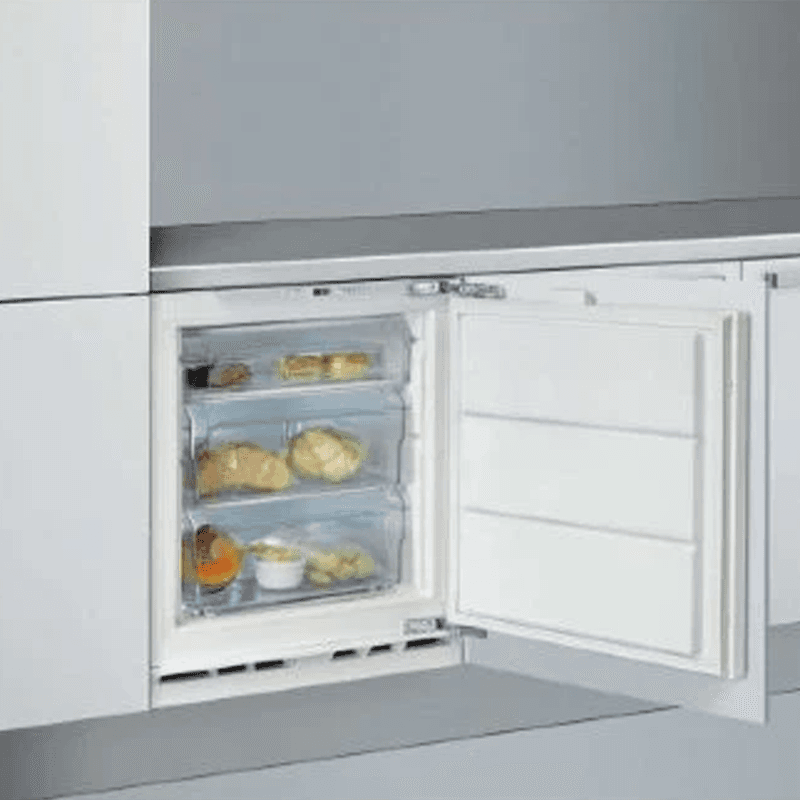
Built-under Freezers
Similar to built-in models, these compact freezers fit snugly under kitchen counters
Freestanding Freezer Types
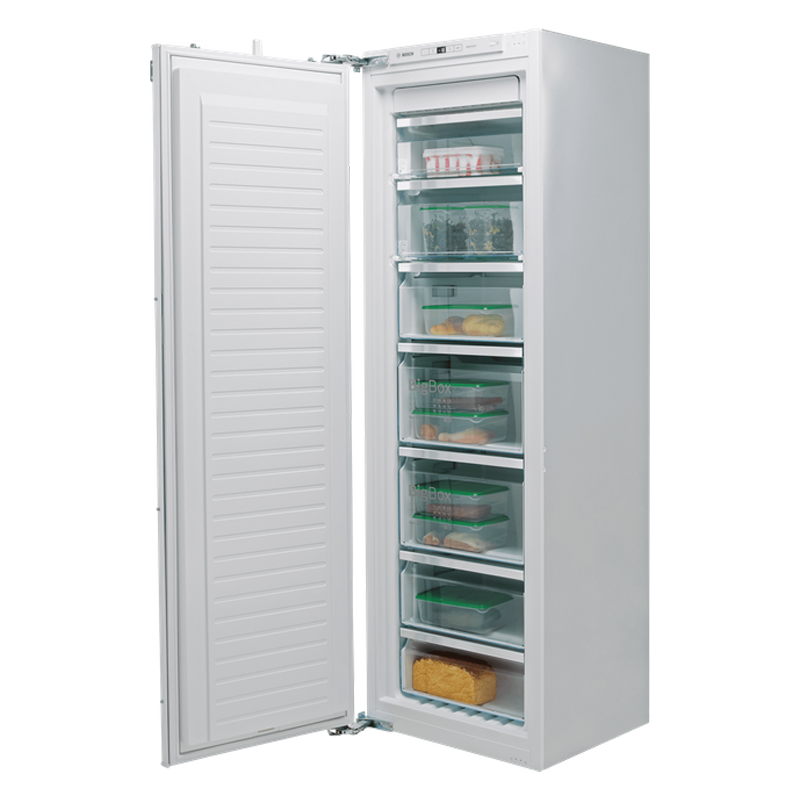
Tall Upright Freezers
Ideal for maximizing storage space, these freezers feature multiple compartments and are suitable for positioning alongside tall kitchen units.
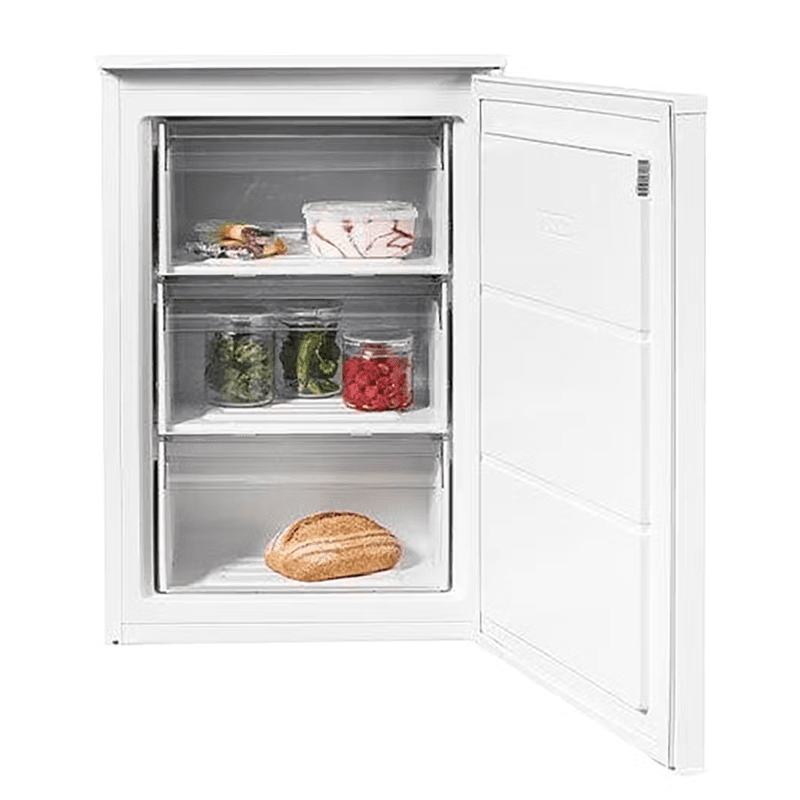
Under Counter Freezers
Perfect for adding extra storage, these freezers neatly fit beneath kitchen countertops.

Chest Freezers
Spacious and accessible, these top-opening freezers come in various sizes to accommodate different needs.
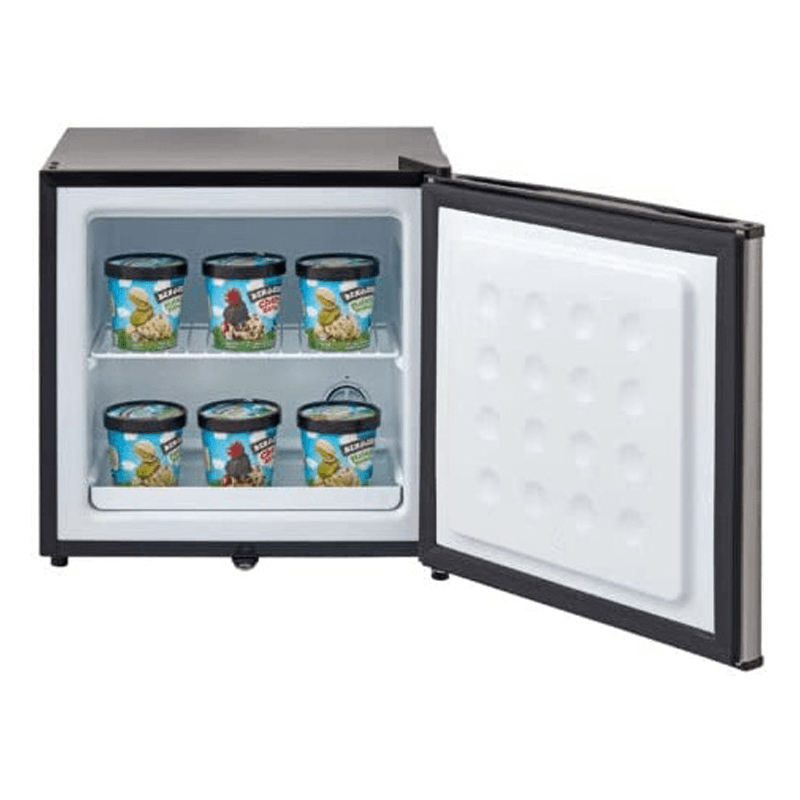
Compact Freezers
Designed for smaller spaces, these mini freezers can be conveniently placed anywhere with access to an electrical outlet.
Measuring for a New Freezer

To ensure a perfect fit, measure the available space carefully and compare it with the dimensions of your chosen freezer. For integrated freezers, consider the cabinet dimensions and door hinge mechanism.
Built-in freezers
Typically adhere to standard cabinet dimensions, with widths and depths ranging from 54-60cm. Heights vary from 130-178cm, while built-under freezers stand 80-90cm tall.
Upright freezers
Upright Freezers can range from 125-200cm in height, 54-60cm in width, and 60-70cm in depth.
Under counter freezers
Under counter freezers are typically 80-85cm tall, 46-60cm wide, and 50-65cm deep.
Chest freezers
Chest freezers come in various sizes, with heights ranging from 84-92cm and widths from 52-165cm
Compact freezers
Compact freezers are less than 50cm in height, width, and depth.
Freezer Energy Ratings: Prioritizing Efficiency
Opt for an energy-efficient freezer to minimize running costs and reduce environmental impact. Energy ratings range from A to G, with A being the most efficient.

Features to Consider: Elevating Utility
Frost-Free Technology
No need to remove frost and ice build up from a freezer with frost free technology.
Winter Guard Technology
Keeping your freezer in the shed? With winter gaurd technology you can store a freezer in temperatures as low as -15°C.
Quick Freeze
Freeze food up to x2 quicker with quick freeze technology
InstaSwitch™ Technology
With just the touch of a button you can convert the entire freezer space into a regular refrigerator and back again whenever you require
Open Door Warning
Beeping warning to remind you to close the freezer door.
Adjustable Compartments
Adjust the compartments in your freezer to suit your needs, making them larger or smaller
Picking Your Color: Melding Form with Function
Harmonize with your kitchen aesthetic by choosing from versatile color options:
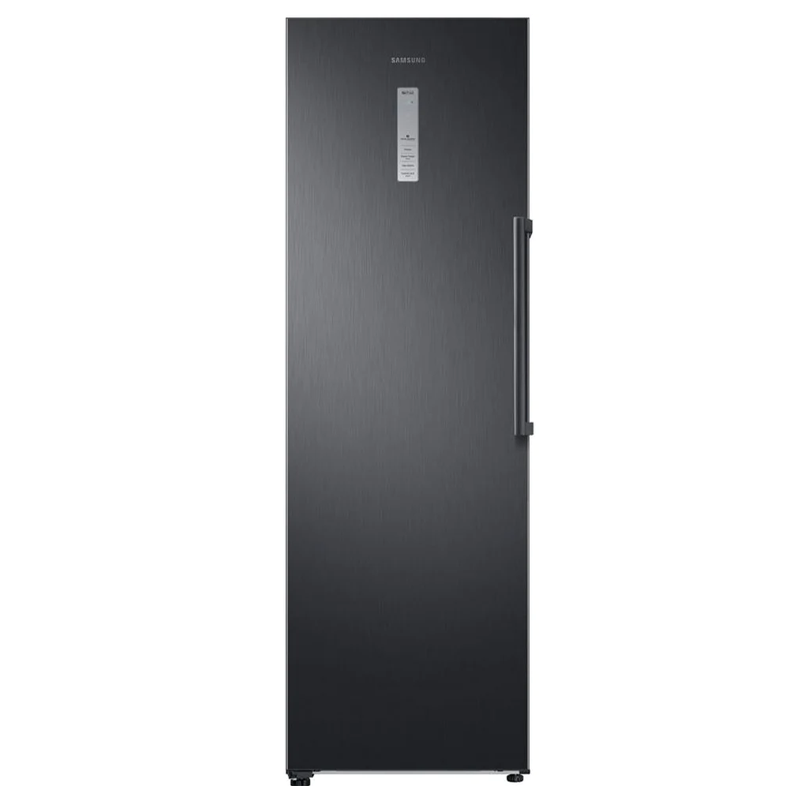
Black
Contemporary and low-maintenance, adding a sleek touch to any decor.

White
Timeless and space-enhancing, imparting a sense of openness and cleanliness.
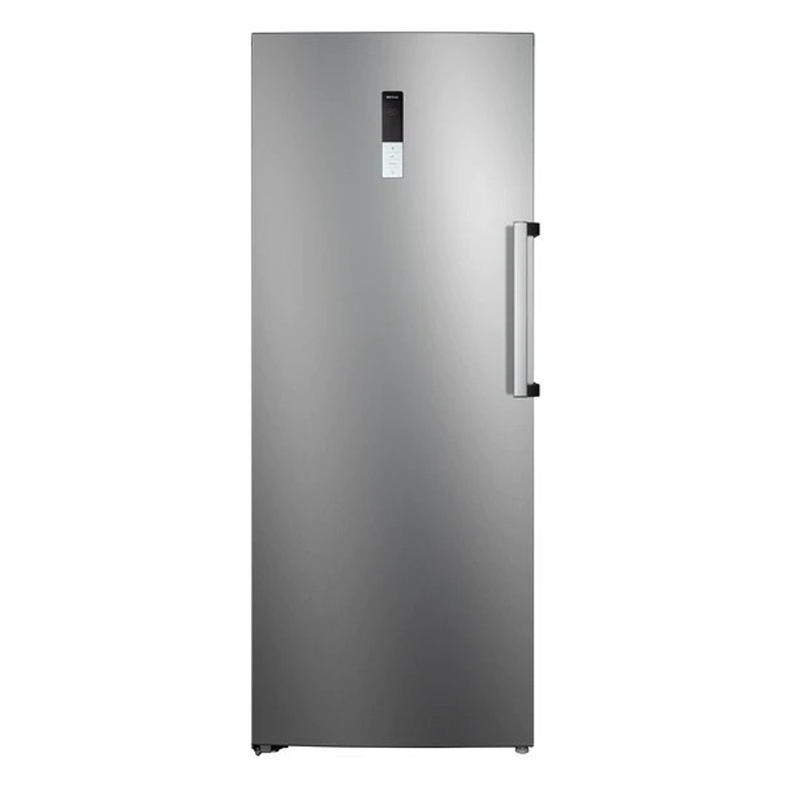
Stainless Steel
Durable and modern, exuding sophistication and resilience.
Freezer Brands: Trusted Partners
Explore a myriad of renowned dishwasher brands, ensuring compatibility with existing kitchen appliances:
Freezer FAQs: Addressing Common Queries
Navigate common concerns with insightful answers:
Choosing Between Freestanding and Integrated Freezers
Choosing between a freestanding or integrated freezer depends on your preferences, kitchen layout, and design aesthetic. Here's a breakdown of each option:
Freestanding Freezer:
- Pros: Freestanding freezers are versatile and can be placed anywhere with adequate space. They come in various sizes and styles, offering flexibility in terms of placement and installation.
- Cons: They may not blend seamlessly with your kitchen décor since they stand alone. However, this could also be an advantage if you prefer the flexibility to move or replace the freezer without affecting your kitchen's built-in design.
Integrated Freezer:
- Pros: Integrated freezers are designed to blend seamlessly with your kitchen cabinets, offering a cohesive and streamlined look. They're often custom-built or designed to fit within specific cabinetry, providing a polished appearance.
- Cons: Integration typically requires professional installation and may limit your flexibility in terms of placement. Integrated freezers may also be more expensive compared to freestanding models due to their custom design and installation requirements.
Ultimately, the decision between freestanding and integrated freezers comes down to your personal preferences, kitchen design, and budget.
A Closer Look at Chest Freezers
A chest freezer is a type of freezer characterized by its horizontal orientation and deep storage capacity. Here's a closer look:
Horizontal Orientation:
Unlike upright freezers, which have a vertical design similar to refrigerators, chest freezers open from the top, featuring a lid that lifts upward. This horizontal layout allows for efficient storage of bulkier items and maximizes usable space.
Deep Storage Capacity:
Chest freezers typically offer generous storage capacity, making them ideal for storing large quantities of frozen foods, bulk purchases, or items such as meats, vegetables, and prepared meals. The deep compartments allow for stacking and organizing items more efficiently.
Energy Efficiency:
Chest freezers are often more energy-efficient than upright models. Because cold air tends to sink and stay contained within the chest design when the lid is closed, these freezers require less energy to maintain the desired temperature, resulting in lower energy bills over time.
Manual Defrost:
Many chest freezers require manual defrosting, meaning you'll need to periodically remove accumulated frost and ice buildup. While this may require some effort, manual defrosting typically results in better temperature consistency and prevents freezer burn on stored items.
Versatility:
Chest freezers are versatile appliances that can be used in various settings, including homes, businesses, and commercial establishments. They're often favored for storing items like seasonal produce, homemade meals, and frozen treats.
Overall, a chest freezer is an excellent choice for those needing ample freezer storage space and energy efficiency, particularly for long-term preservation of frozen foods.
An Overview of Frost-Free Technology
Frost-free technology is a feature commonly found in modern freezers, refrigerators, and combination units. Here's an overview:
Automatic Defrosting:
Frost-free technology eliminates the need for manual defrosting by automatically regulating the freezer's temperature and periodically melting any ice or frost buildup on the freezer walls and coils.
Improved Air Circulation:
Frost-free freezers use fans to circulate air evenly throughout the interior, preventing the formation of frost and ice crystals. This constant airflow helps maintain a consistent temperature, which is crucial for preserving the quality of frozen foods.
Temperature Control:
Frost-free freezers typically have advanced temperature control systems that monitor and adjust the internal temperature as needed to prevent frost buildup. This ensures that the freezer remains at optimal storage conditions for frozen foods.
Convenience:
One of the primary advantages of frost-free technology is the convenience it offers to users. With no manual defrosting required, you don't have to worry about scheduling time-consuming defrosting sessions or dealing with the mess and inconvenience of melting ice.
Energy Efficiency:
While frost-free freezers may consume slightly more energy than manual defrost models due to the operation of the fans and temperature control systems, they often result in overall energy savings by maintaining more consistent temperatures and reducing the need for frequent defrosting cycles.
In summary, frost-free technology provides users with the convenience of automatic defrosting, improved temperature control, and energy efficiency, making it a popular choice for modern freezer appliances.
Choosing the Best Freezer for a Garage
When choosing the best freezer for a garage, there are several factors to consider, including temperature range, insulation, and durability. Here are some options to consider:
Garage-Ready Freezers:
Look for freezers specifically designed for garage use. These models are engineered to operate efficiently in a wider range of temperatures, making them suitable for environments with fluctuating temperatures, such as garages.
Chest Freezers:
Chest freezers are often preferred for garage use because they typically have better insulation and can maintain colder temperatures more effectively than upright freezers. Their top-opening design also helps prevent cold air from escaping when the freezer is opened, which is especially beneficial in a garage environment.
Frost-Free vs. Manual Defrost:
Consider whether you prefer a frost-free freezer or one that requires manual defrosting. While frost-free freezers offer convenience by eliminating the need for manual defrosting, they may not be as energy-efficient in colder environments. Manual defrost freezers are generally more energy-efficient and may be better suited for garages with consistently low temperatures.
Size and Capacity:
Choose a freezer size and capacity that meets your storage needs without taking up too much space in your garage. Consider the dimensions of the freezer as well as its internal capacity to ensure it fits comfortably.
Durability:
Opt for a freezer with sturdy construction and durable materials that can withstand temperature fluctuations and potential exposure to dust and debris in a garage setting. Look for features like robust hinges, thick insulation, and a durable exterior finish.
Some popular brands known for producing reliable freezers suitable for garage use include Whirlpool, Indesit and Zanussi.
Factors Affecting the Lifespan of a Freezer
The lifespan of a freezer can vary depending on several factors, including the quality of the appliance, how well it's maintained, and how frequently it's used. On average, a freezer can last anywhere from 10 to 20 years. Here are some factors that can affect the longevity of a freezer:
Quality of Construction:
Freezers built with high-quality materials and components tend to last longer than cheaper models. Stainless steel exteriors, sturdy hinges, and durable interior components can contribute to a longer lifespan.
Maintenance:
Regular maintenance can extend the life of a freezer. This includes cleaning the interior regularly, defrosting when necessary (for manual defrost models), and ensuring proper ventilation around the appliance to prevent overheating.
Temperature Fluctuations:
Fluctuations in temperature can put stress on the compressor and other components of the freezer. Placing the freezer in a stable environment with consistent temperatures can help prolong its lifespan.
Usage:
How frequently the freezer is used and how much it's loaded with food can impact its longevity. Overloading the freezer can strain the compressor and other components, while frequent opening and closing can cause wear and tear on the door seals and hinges.
Manufacturer's Warranty:
Many freezers come with a manufacturer's warranty that covers certain parts and repairs for a specific period. Choosing a freezer with a longer warranty can provide added protection and peace of mind.
While a freezer can last for many years with proper care and maintenance, it's essential to keep an eye out for signs of wear and tear, such as unusual noises, temperature fluctuations, or frost buildup. If you notice any issues, it may be time to consider repairing or replacing the appliance.












